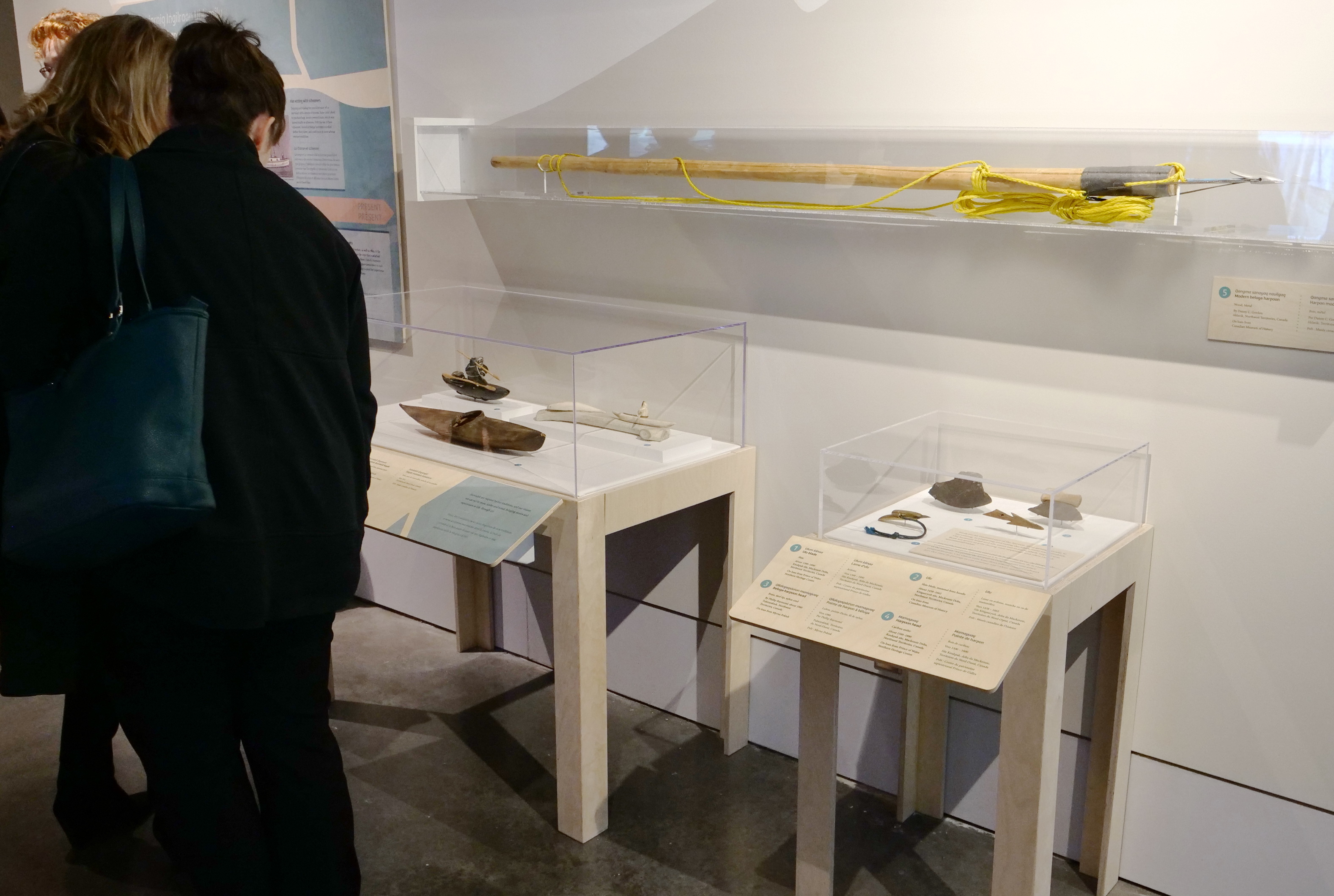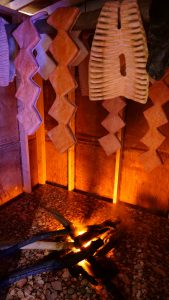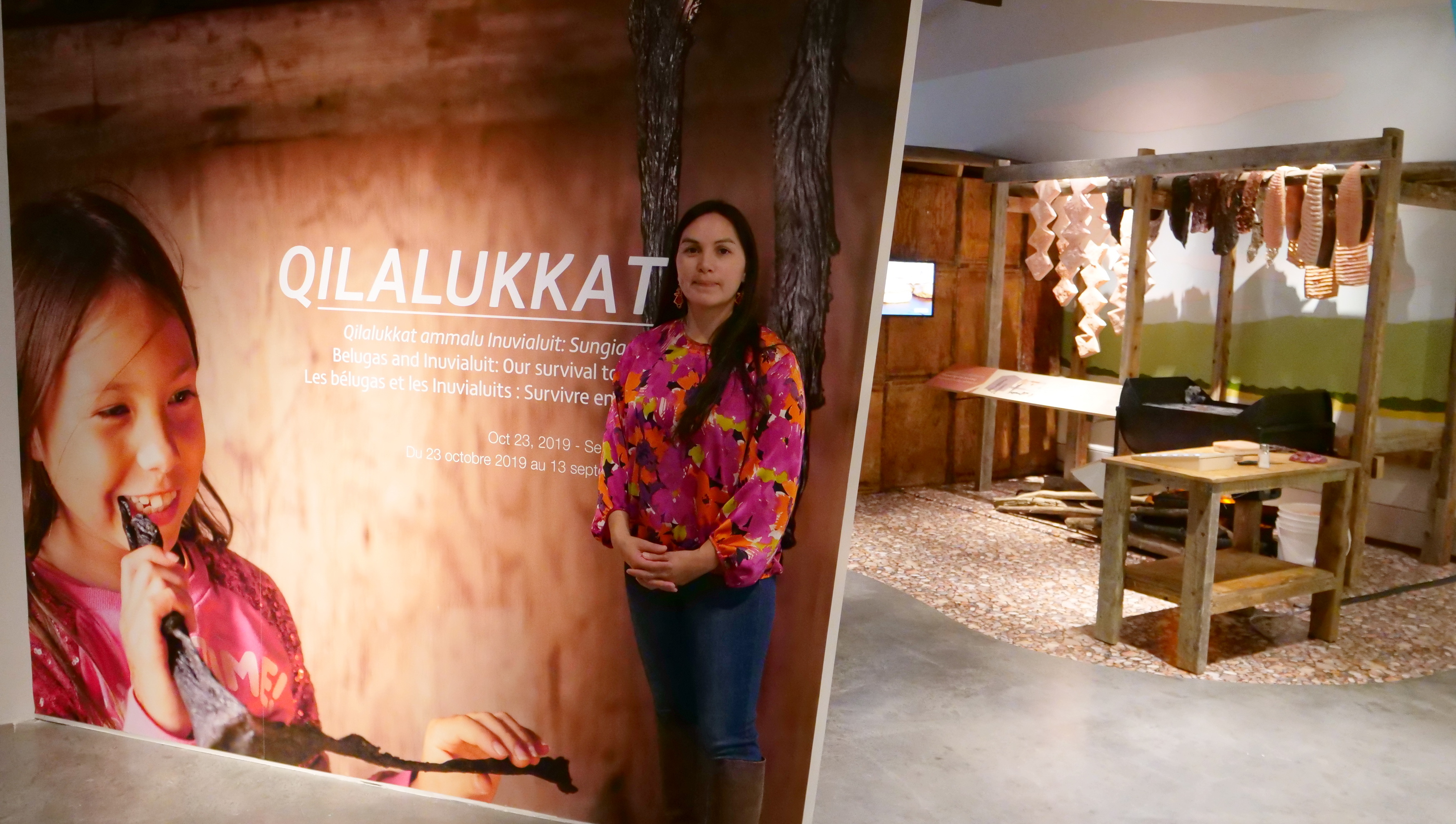A new exhibition that explores the importance of beluga whales to Inuvialuit ‘Inuit of the Western Canadian Arctic’ opens October 25 at the Canadian Museum of Nature.
Qilalukkat, Belugas and Inuvialuit, ‘Our Survival Together’ was curated by Myrna Pokiak, an Inuvialuit cultural educator born and raised in Tuktoyaktuk, N.W.T.

“We’re delighted to present this latest exhibition in our Northern Voices Gallery,” Meg Beckel, President and CEO of the Museum said. “This special exhibition space, situated within our Canada Goose Arctic Gallery, shares perspectives from Northern communities about their culture and their relationship with the land. Qilalukkat! brings to light the stories and traditions of Myrna Pokiak and her family, centered on their culture’s reliance upon beluga whales.”
The area known as the Inuvialuit Settlement Region extends from the western Canadian Arctic islands to the Beaufort Sea coast and Mackenzie River delta. Beluga whale-harvesting has long been a vital part of Inuvialuit life. Inuvialuit families do an annual harvest every summer when the whales return to the Mackenzie River estuary.

“I was raised in the Inuvialuit Settlement Region living on the land and sea. Now that my family and I live in the city, the work I do becomes even more important,” Ms. Pokiak said. “I am obligated to teach my daughters our history, the traditions my family continues to practice, and experiences like the beluga whale harvest—a necessity for the physical, spiritual and mental health of Inuvialuit families and communities. I hope that the work I do will allow my daughters and other Inuvialuit to be proud of who we are and where we are from.”
One whale provides a year’s worth of food for a family Pokiak says and adult male belugas may be over 5 metres long and weigh up to two tons (1800 kg). Females are smaller and newborn belugas are about 1.5 metres long. Through text panels, specimens, artifacts, models, photos, videos, visitors will gain insights into Inuvialuit culture and traditions.

A highlight in the 60-square-metre (650-sq.-ft.) space is a recreated smokehouse and food preparation area with displays of modern and traditional tools, models of drying whale meat (mipqu) and whale blubber and skin (muktuk), specimens such as a beluga skull, and artifacts such as an ulu—an all-purpose knife used by several Northern cultures but typically created in a triangular shape by the Inuvialuit.
Among the artifacts on display is the stone end blade of a harpoon embedded in a beluga vertebra and an ivory charm carved into the form of two belugas. On loan from the Prince of Wales Northern Heritage Centre (PWNHC) in Yellowknife, these specimens date to around AD 1300-1450 and were found on the Mackenzie River Delta close to the archaeological site of Kuukpak—a large, pre-contact Inuvialuit village that was occupied well into the 19th century.
The exhibit also explains how Inuvialuit people and scientists work together for beluga conservation. Unlike beluga populations elsewhere, the ones in the Western Arctic’s Beaufort Sea are not at risk, meaning Inuvialuit harvesting is sustainable.
Interestingly, the word beluga comes from the Russian name for white whales, belukha. The Inuvialuit name qilalukkat arose from an ancient legend where, long ago, a young man threw his stepmother into the ocean. She became a beluga whale, and her complaining sound gave belugas their Inuvialuktun name: qilalukkat. Inuvialuit means “Real People” in Inuvialuktun.
Qilalukkat! Belugas and Inuvialuit: Our Survival Together is presented in partnership with the Prince of Wales Northern Heritage Centre. It is an adaptation and update of the Qilalukkat! Beluga! exhibition that Myrna Pokiak helped develop at the PWNHC in 2006.
The exhibition is included with regular museum admission. The museum is located at 240 McLeod Street (at Metcalfe St.), Ottawa. Visit nature.ca for hours and fees.

The beluga harvest in the Western Canadian Arctic is sustainable—part of a co-management program with Inuvialuit and Fisheries and Oceans Canada that includes monitoring, research, education, tourism, and guidelines for shipping routes.
The Canadian Museum of Nature is Canada’s national museum of natural history and natural sciences. The museum provides evidence-based insights, inspiring experiences and meaningful engagement with nature’s past, present and
future. It achieves this through scientific research, a 14.6 million specimen collection, education programs, signature and travelling exhibitions, and a dynamic web site, nature.ca.
twitter.com/artcgreen




